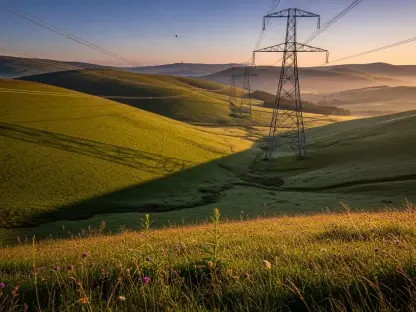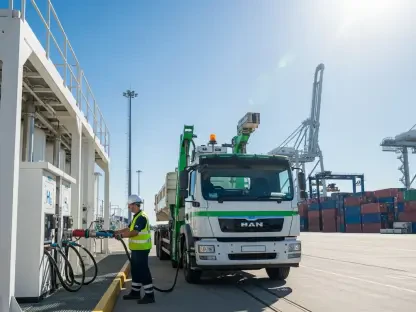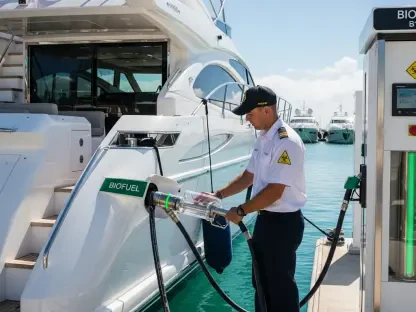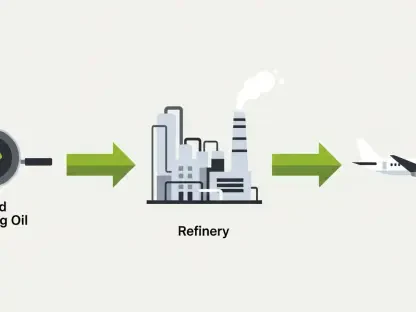Setting the Stage for a Contentious Debate
Imagine a region rich in natural beauty, where rugged mountains and pristine rivers define the landscape, now standing at the heart of a bitter clash between economic ambition and environmental preservation. In Alberta, the coal mining industry has reignited a fierce debate with the recent cancellation of a public hearing for the Summit steelmaking coal project near Grande Cache. This decision, made by the Alberta Energy Regulator (AER), has sparked outrage among environmentalists, legal experts, and local communities who see it as a dangerous precedent for sidelining public input. The controversy underscores a broader struggle within the province to balance the economic benefits of resource extraction with the urgent need to protect vital ecosystems.
This report dives into the complex dynamics surrounding coal mining in Alberta, exploring the historical and current significance of the industry while dissecting the implications of the cancelled hearing. It examines the regulatory challenges, environmental risks, and political influences shaping energy governance in the region. As tensions mount, the incident raises critical questions about transparency, accountability, and the future of public participation in resource development decisions.
Background of Coal Mining in Alberta
The coal mining industry has long been a cornerstone of Alberta’s economy, with roots tracing back over a century to when coal powered early industrial growth. Today, it remains a significant contributor to provincial revenue, supporting jobs and infrastructure, particularly in rural areas. Steelmaking coal, a key export, continues to drive interest from international players, despite global shifts toward renewable energy. The industry’s presence is felt deeply in communities near mining sites, where economic benefits often clash with concerns over environmental degradation.
Key players, such as Valory Resources, an Australian-led Canadian company, are at the forefront of major projects like the Summit steelmaking coal project, also known as Mine 14. Located near Grande Cache, this initiative promises substantial economic returns but has drawn scrutiny for its potential impact on local ecosystems and water quality. The dual reality of job creation and environmental harm shapes public opinion, creating a polarized landscape where community voices often struggle to be heard amid corporate and governmental priorities.
Politically, the United Conservative Party (UCP) government has played a pivotal role in shaping the industry’s trajectory. Under its leadership, policies have frequently favored resource development, including past reversals on coal mining restrictions in the Rockies. These decisions have fueled contention, as critics argue that economic gains are prioritized over long-term sustainability, setting the stage for conflicts like the one surrounding the Summit project. The government’s stance continues to influence regulatory processes, often amplifying industry leverage in decision-making arenas.
The Cancelled Hearing: What Happened and Why
Details of the Summit Project Hearing Cancellation
In a move that stunned many, AER CEO Rob Morgan made the unilateral decision to cancel the public hearing for the Summit project near Grande Cache, effectively halting a critical platform for public scrutiny. This action came after intense lobbying by Valory Resources, which argued that the hearing was unnecessary and posed risks of delay to their operations. The company even threatened to abandon the project altogether if forced to endure what they deemed a frivolous process, putting additional pressure on the regulator to comply with their demands.
The cancellation overturned an earlier AER ruling that had recognized the importance of public input due to widespread concerns over land use and environmental impacts. By stepping in, Morgan’s decision bypassed the agency’s own adjudicative branch, raising alarms about the integrity of procedural norms. This unprecedented step has been criticized as a direct challenge to the established framework for evaluating energy projects in Alberta.
Reactions and Immediate Fallout
Environmental groups, including the Alberta Wilderness Association (AWA) and the Canadian Parks and Wilderness Society (CPAWS), swiftly condemned the cancellation as a blow to democratic principles. They argued that shutting down the hearing deprives communities and stakeholders of their right to voice concerns over a project with far-reaching ecological consequences. The move has been seen as emblematic of a broader trend of diminishing public engagement in resource approvals.
Legal experts have also weighed in, with figures like Nigel Bankes, a respected resource lawyer, labeling the decision as one of the most ill-considered by any regulator. Bankes and others contend that such actions erode trust in the AER’s ability to act impartially, suggesting a troubling alignment with corporate interests. Public sentiment echoes this frustration, with many expressing dismay over the lack of transparency and the apparent ease with which industry demands can override established processes.
The fallout has amplified calls for accountability, as citizens and advocacy groups question how decisions of such magnitude can be made without broader consultation. The incident has become a flashpoint for debates over who truly holds power in Alberta’s energy sector, with many fearing that public voices are being systematically sidelined in favor of economic expediency.
Challenges and Controversies Surrounding Regulatory Independence
The cancellation of the Summit project hearing has cast a harsh spotlight on accusations of regulatory capture within the AER. Critics argue that the agency, meant to serve as an impartial overseer of energy projects, is increasingly swayed by industry and governmental pressures. Morgan’s decision to intervene directly in the hearing process is cited as evidence of a system where corporate influence can override procedural fairness, undermining the regulator’s credibility.
Historical examples further illustrate these systemic challenges, such as the AER’s reconsideration of previously rejected projects like Grassy Mountain under apparent government direction. Similarly, changes to flaring limits for oil and gas facilities, made after industry pushback, highlight a pattern of regulatory decisions aligning with corporate priorities. These instances suggest a deeper issue of insufficient autonomy, where the AER struggles to maintain independence from external forces.
Addressing these concerns requires structural reforms to shield the regulator from undue influence. Proposals include establishing stricter guidelines to prevent corporate overreach and enhancing the AER’s autonomy through legislative protections. Without such changes, the risk of further erosion of public confidence in energy governance remains high, potentially leading to more conflicts over project approvals in sensitive regions.
Environmental and Public Health Impacts at Stake
The Summit project, situated on Grande Mountain, poses significant environmental risks that have been central to opposition efforts. This area, known for its rich biodiversity and critical habitats for species like bears and caribou, faces threats to air and water quality from coal mining activities. Pollutants from such operations can travel vast distances, impacting ecosystems up to 100 kilometers downwind and 500 kilometers downstream, with long-term issues like selenium contamination persisting even after mine reclamation.
Valory Resources’ application for the project has been criticized for notable deficiencies, including a lack of site-specific groundwater data and inadequate assessments of cumulative impacts. These gaps raise serious questions about the potential for irreversible harm to water resources and surrounding communities. Without thorough evaluation, the full scope of environmental damage remains unclear, heightening the urgency for comprehensive scrutiny.
Public hearings serve as a vital mechanism for addressing these concerns, offering a platform to hold companies accountable and ensure that ecological risks are mitigated. The cancellation of such a process for the Summit project deprives stakeholders of the opportunity to demand answers and push for protective measures. This absence of dialogue jeopardizes not only the environment but also the health and well-being of populations dependent on these natural resources.
Political Influence and the Future of Energy Regulation in Alberta
Under Premier Danielle Smith, the UCP government has consistently shaped energy policies that lean toward resource development, often at the expense of environmental safeguards. Actions such as settling lawsuits with Australian coal companies for substantial sums without public disclosure reflect a prioritization of industry interests. These settlements, alongside the appointment of industry-friendly figures to the AER board, suggest a deliberate tilt in regulatory oversight that favors corporate agendas.
Government directives have also influenced specific AER decisions, including the push to reconsider rejected coal projects and relax environmental restrictions. This political backdrop creates an environment where regulatory bodies may feel compelled to align with pro-industry policies, even when public and ecological concerns are at stake. The resulting perception of bias further complicates efforts to maintain a balanced approach to energy governance.
Looking ahead, there is a tangible risk that public participation in energy decisions could continue to diminish, especially if current trends persist. Global environmental movements, however, may exert counterpressure, urging Alberta to align with broader sustainability goals. The tension between these forces will likely shape the province’s coal policies in the coming years, determining whether economic imperatives or ecological priorities will dominate the regulatory landscape.
Reflecting on a Path Forward
The cancellation of the public hearing for the Summit coal project has underscored deep flaws in Alberta’s energy governance, revealing a troubling interplay of regulatory failure, environmental disregard, and corporate dominance. This incident, driven by AER CEO Rob Morgan’s decision under pressure from Valory Resources, has ignited widespread criticism and exposed the fragility of public trust in the system. It has also highlighted the critical environmental risks tied to coal mining in ecologically sensitive areas, risks that remain unaddressed due to the absence of public scrutiny.
Moving forward, actionable steps are needed to restore confidence and ensure a more equitable approach to resource development. Reinstating mandatory public hearings for projects with significant environmental impacts emerges as a key reform, alongside efforts to bolster the AER’s independence through clear legislative boundaries against industry and governmental interference. Transparency in dealings with foreign corporations, particularly in financial settlements, also stands out as a priority to prevent perceptions of favoritism.
Ultimately, Alberta faces a pivotal moment to redefine its energy future by embracing reforms that prioritize long-term sustainability over short-term gains. Strengthening regulatory frameworks and fostering genuine public engagement could pave the way for a model that balances economic growth with environmental stewardship. These steps, if taken, would mark a significant shift toward rebuilding trust and ensuring that the province’s natural heritage is safeguarded for generations to come.









